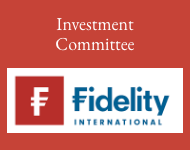The fluctuations in indices against one another – notably the comparison of Europe and the US – matter little to active managers, fro whom informed investment decisions should be shaped by distinctions and idiosyncrasies, not by broad-brush assumptions and oversimplifications, as David Walton, manager of the IFSL Marlborough European Special Situations Fund, explains.
European stocks’ outperformance of their US counterparts is officially over[1]. In effect, the brief but seemingly golden age ran from Donald Trump’s early-April “Liberation Day” announcement to the end of June. Ah, well. It was fun while it lasted.
But does this actually matter? Should we all genuinely reconsider our options when we discover the S&P 500 has caught up with and then passed the STOXX 600? And should we embark on yet another rethink if Europe somehow regains the lead further down the line?
It rather depends on how we prefer to invest. If we enjoy slavishly tracking indexes or possess a penchant for the wonders of day trading, for example, such developments might be of significant interest.
On the other hand, if we favour an active approach – that is, if we believe there is merit in identifying and backing individual companies that can deliver growth over the long term – we might be somewhat less enthralled. I happen to be in this camp – and, sure enough, I am suitably unmoved.
This is because I have long since learnt that European stocks almost always retain a capacity to outperform. This is the case irrespective of the White House’s whims, major fiscal stimulus packages, era-defining commitments on defence spending, trade deals or pretty much any other twists and turns we might care to mention.
The trick lies in identifying specific businesses that are positioned to prosper amid all the surrounding noise. At present, all things considered, smaller companies with a more domestic focus may fit the bill especially well.
Applying a company-by-company lens to investing in Europe
Historically, many investors’ forays into Europe have been limited to large-cap companies. This has tended to mean exposure to global organisations that, although domiciled in the region, have few connections with the local economy.
Such a strategy might be notably less appealing now. The spectre of tariffs has underscored the attractions of businesses that are likely to be spared the worst impacts of any international trade tensions.
Consumer goods manufacturer Sarantis offers an illustration. Based in Greece, it benefits from a strong presence across the continent, minimal external competition and almost no exports to the US. In so far as is possible, it can be seen as “Trump-proof”.
Crucially, the attributes that define Sarantis as a solid investment prospect are not to be found in every consumer goods manufacturer in Europe. Nor are they to be found throughout any given industry, sector or country.
They are instead present – or not – at the most fundamental levels within certain companies. This is why, not least in the arena of small-caps and mid-caps, active fund management should be rooted in assessing each business’s own unique characteristics.
Stock-picking of this kind requires a blend of quantitative and qualitive analysis. In-depth research and direct engagement can be vital to the process of evaluating potential investments on a bottom-up, company-by-company basis. Sweeping generalisations are of scant use, if any at all.
Headlines versus facts
Naturally, as the manager of a fund that specialises in the region’s smaller companies, I take a modicum of pleasure from stories trumpeting that Europe is on the rise. Equally, there is no mean tedium in news of the resumption of US superiority – or, to put it more accurately, what is widely perceived to be US superiority – or further trade conflict.
Yet the overwhelming likelihood is that no headline is going to radically disrupt the investment process my team and I use. This could happen only if it were logical to infer that all of Europe is in rude health one day, in comparatively dire straits the next, back on top of the world the day after and so on.
Whatever seismic shift in the narrative might be implied, it is ridiculous to suppose every single company will react in the same way. In our view, informed investment decisions should be shaped by distinctions and idiosyncrasies – not by broad-brush assumptions and oversimplifications.
So it may well be that Europe as a whole is no longer outperforming. It may well be that the US as a whole has reclaimed top spot.
But the fact remains that at any given time, in any given circumstances, Europe is home to many outperforming individual stocks – just as the US is home to many underperforming ones. In particular, many European small-caps continue to shine.
The lesson? Move beyond the noise and remember there are opportunities everywhere. Today, as ever, there is an enormous amount to be said for diversification – not just across geographies but across the market-capitalisation spectrum.
[1] See, for example, Reuters: “European stocks’ 2025 performance is over, but don’t forget the euro”, July 7 2025
Main image: jungwoo-hong-cYUMaCqMYvI-unsplash
































